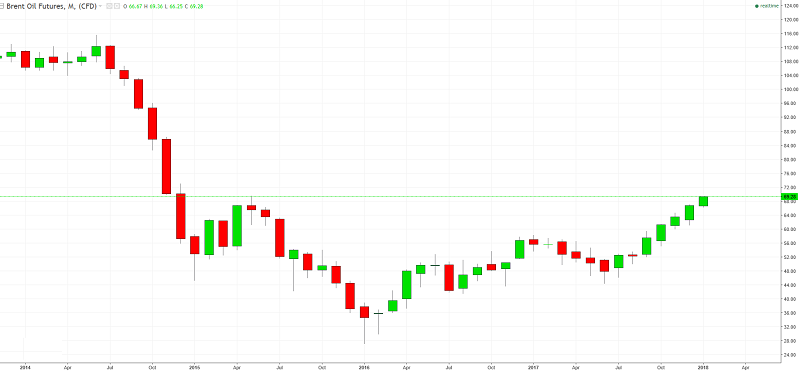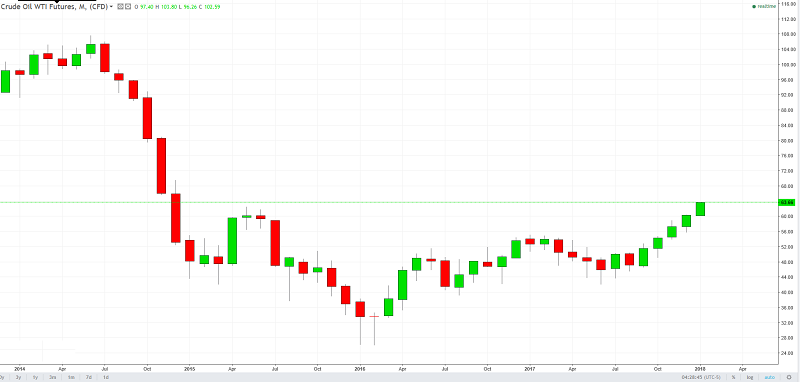Crude oil in 2018: is it really a bullish trend?
Background
Let’s look at the background of the price dynamics.
The great fall of the oil price happened in 2014. It was caused by the increased oil production in the USA and Canada. American private companies started extracting oil from shale formations in North Dakota. At the same time, Canada started extracting from oil sands that are the world’s third-largest crude oil reserve. That local production caused the shortage of the oil demand from these countries, increased oil supply and led to the fall of the oil price. The important fact is that OPEC, the leader of the oil sphere, refused to cut its oil production letting prices fall. The dynamics you can see on charts below.


Positive trend
Changes began only in 2016 when OPEC and Russia agreed to shorten the oil extract. After that agreement prices started to increase slowly, not without falls, but the great fall never happened after anymore.
As we can see from the charts, prices of both the major oil brands - Brent and WTI - are rising from September 2017. Now prices at the highest closing levels since December 2014.
This trend gave a reason to analysts and economists to make positive predictions about the future of the prices. Nevertheless, it is important to take into account a lot of factors that had an impact on the price, especially at the end of December 2017: strikes in Iran, the explosion at a major oil pipeline in Libya, scandals in Saudi Arabia. All those events caused the rise of the prices, but there can be factors that can direct the trend in the opposite way in 2018.
What can affect prices in 2018
However, nothing can be absolutely clear, there are factors that can affect the oil price in 2018. If only supply and demand remain nearly balanced, the price will rise.
First of all, OPEC and Russia have to continue their cutting policy that has such a positive impact on the oil price. If only countries decide to change the policy and come back to the same amount of oil they extracted before, the price will fall again.
Secondly, some economists suppose that the USA can continue extracting oil because of increasing price that can lead to the fall of price.
Speculations are important fact as well. For example, Torbjorn Kjus, chief oil analyst at DNB Bank ASA, assumed that crude can soon see a speculator-driven slump because of a record number of bullish bets at the beginning of 2018.
A lot of political events can affect oil price in 2018. For example, cutting of oil extracting in Venezuela, scandals in Saudi Arabia and an unstable political environment in Iran.
Summing up all factors that can influence oil price in 2018, we can say that it is complicated to predict the price of crude oil in 2018. Some of the events can lead to the rise of the price, some of them to the fall. However, most of the economists agree on the price from $50 to $70 per barrel.